Blackstone Parks Conservation District
Blackstone Park Conservation District is a 45-acre natural woodland. It contains two ponds, York Pond and Hockey Pond, and some open meadow. This park serves as a green buffer between city streets and the Seekonk River, reducing the amount of runoff that enters the river. With its varied topography, it supports a rich diversity of plants and wildlife habitats and is part of a larger regional wildlife corridor that includes the Blackstone River watershed and Narragansett Bay. Migrating birds stop by in Spring and Fall. In 2003, the park was rezoned a Conservation District through the creation of a new zoning category to protect environmentally sensitive open spaces. The Park is enjoyed by walkers, birders, and fishermen/women, as well as by passing bicyclists, runners, and motorists.
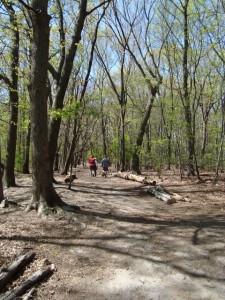 In 2001 Rick Enser, a conservation biologist at URI, compiled detailed lists of species spotted in the park (see Birds, Plants, Other Wildlife). The lists have grown thanks to amateur sightings, and we are still adding today. Please let us know if you have spotted more plants or wildlife species that should go on these lists.
In 2001 Rick Enser, a conservation biologist at URI, compiled detailed lists of species spotted in the park (see Birds, Plants, Other Wildlife). The lists have grown thanks to amateur sightings, and we are still adding today. Please let us know if you have spotted more plants or wildlife species that should go on these lists.
Currently the woodland, ponds and open areas of the Conservation District face a considerable challenge from invasive plants. These plants were originally brought to our region for gardens or came in as accidental "hitchhikers". For various reasons they grow very well here, and crowd out the native plants that local wildlife need for food. They also invade yards and gardens, and are difficult to eradicate. We are working against invasive species in two ways. First, we are removing invasive plants so that the many attractive native plants that already live in the park will be able to multiply and attract more wildlife. Second, we are planting native plants, preferably grown in Rhode Island, to more quickly fill in the bare spots.
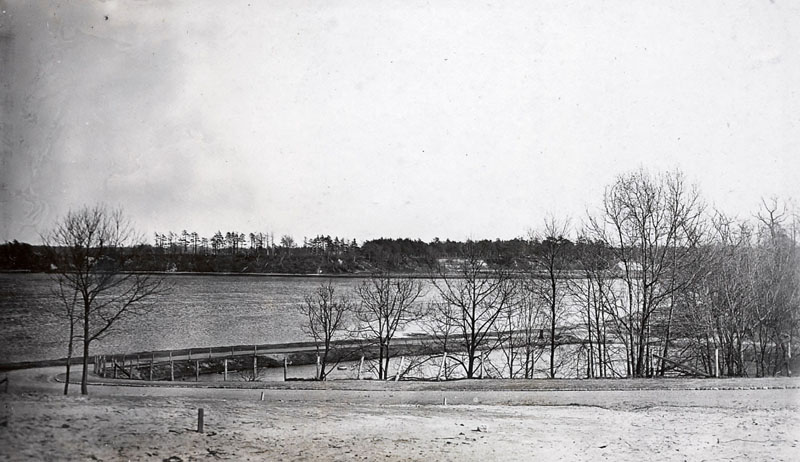
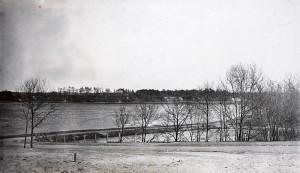 Picture Native Americans traveling from the East Side of Providence to East Providence. Their important route, the Wampanoag Trail, included a portion that went through Blackstone Park in the area of what is now called South Angell Street. Once they reached the end of land they forded the Seekonk River and continued their travels.
Picture Native Americans traveling from the East Side of Providence to East Providence. Their important route, the Wampanoag Trail, included a portion that went through Blackstone Park in the area of what is now called South Angell Street. Once they reached the end of land they forded the Seekonk River and continued their travels.
In 1866 Moses B. Jenkins and William P. Vaughn donated 'for a public park' five acres including a stream and the ravine between Butler Avenue and the Seekonk.
In the late 1860's, developers mapped out the adjacent area south toward Angell Street with winding roads and house lots. Because it seemed a long distance from the developing city only a few houses were built and it remained relatively untouched until after the turn of the century.
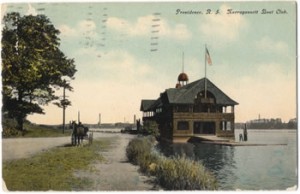
A late nineteenth-century interest in including parks and green space in city plans led to the development of the area as a public park. Subsequent purchases enlarged the park to its present 45-acre size. However, for years the park was neglected. People removed sand from the banks to use for building. When the city planted pines to stop this activity, many of those were dug up to improve private yards.
In 1908 the city improved the park under the stewardship of Parks Superintendent Greene. Improvements included the creation of a bridle path for horseback riding and grading the bluffs fronting on Irving Avenue. The stairway was built to York Pond from the bluffs. River Road was improved (although not paved).
During the Great Depression in the 1930's, the Works Progress Administration (WPA) built square stone pillars and wall at the edge of the woods opposite the Narragansett Boat Club. These were part of a planned entrance to the park from River Drive that was never completed. In addition, the WPA built the pillars and wall at the foot of the stairs near York Pond. The WPA also may have paved the road, and almost certainly added curbstones and sidewalks.
WPA plaques may be found in two places, one on the outflow structure of the pond, and the other on the right hand pillar opposite the Narragansett Boat Club.
The park borders the Seekonk River all the way from the Henderson Bridge to Gulf Road, where a stone wall divides it from Butler Hospital property. It is divided into three sections by Irving Avenue and Angell Street, which end at the river. There are trails throughout the wooded areas. The central area is the most open where some of the trails follow old wood roads. During the fishing season, people fish in the river. Boats from the Narragansett Boat Club are on the river from dawn to dusk, weather permitting.
Ten thousand years ago, the receding glacier left deep outwash consisting of sand and gravel deposits that form the banks of the Seekonk River and the bluffs above it. On eroded trails and banks the yellow sand and small stones that underlie the topsoil are visible. Over time, decaying plant material formed the layer of topsoil that sustains the woods and undergrowth of Blackstone Park.
Cumberlandite, a mineral unique to Cumberland, RI, was carried from Cumberland by the glacier and deposited in the park. A number of pieces of this black rock flecked with light crystals have been found and continue to turn up. Cumberlandite is weakly magnetic and unusually heavy. For the true lover of geologic detail, Alonzo W. Quinn, in Rhode Island Geology for the Non-Geologist, writes that it "is a porphyritic rock, composed of larger crystals of plagioclase feldspar in a finer-grained groundmass of magnetite, ilmenite, and olivine". Cumberlandite may also be found along the riverbank in Swan Point Cemetery.
Invasive Species
The most prevalent invasive species in the park are: Oriental Bittersweet, Japanese Knotweed, Tree of Heaven (Ailanthus), Purple Loosestrife, Garlic Mustard, and Multiflora rose. Poison ivy, which grows throughout the park, is a native plant.
Most of these were introduced to the area by horticulturists as garden ornamentals. An exception is garlic mustard, which was introduced as a food plant. Japanese Knotweed, Purple Loosestrife, and Oriental Bittersweet are particularly invasive and difficult to eradicate.
Introduced plants that become invasive have particular habits that make them more successful than native plants, for example a long growing season, long tap roots to reach water, chemicals that weaken neighboring plants, and ability to tolerate harsh conditions. These plants tend to crowd out the native plants that local wildlife need for food and habitat.
In the Conservation District, one instance of a native - invasive "mismatch" occurs when monarch butterflies lay their eggs on (invasive) black swallow-wort instead of native milkweed. Black swallow-wort is in the milkweed family, but the young monarch caterpillars cannot digest its leaves so they die.
For history and information on invasive plants in New England, see Invasive Plant Atlas of New England. For general information, please see www.invasive.org or invasivespeciesinfo.gov.
While you are enjoying the beauty of Blackstone Parks you may spot Invasive Species. Please use the link to the handy form below (and you can even upload a photo) to let us know where you see them.
In Blackstone Park Conservation District, we are addressing two major issues; erosion of soil from bluffs, trail, and lawn, and removal and monitoring of invasive species of plants.

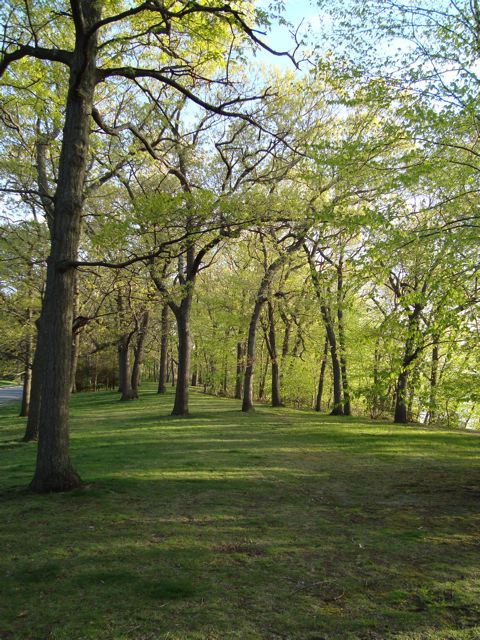
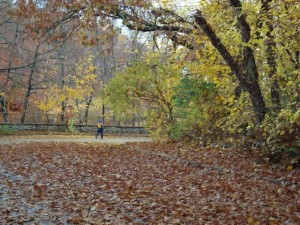
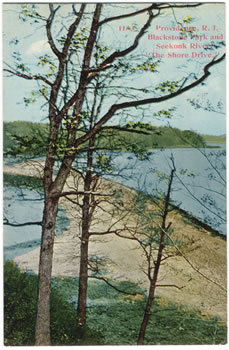
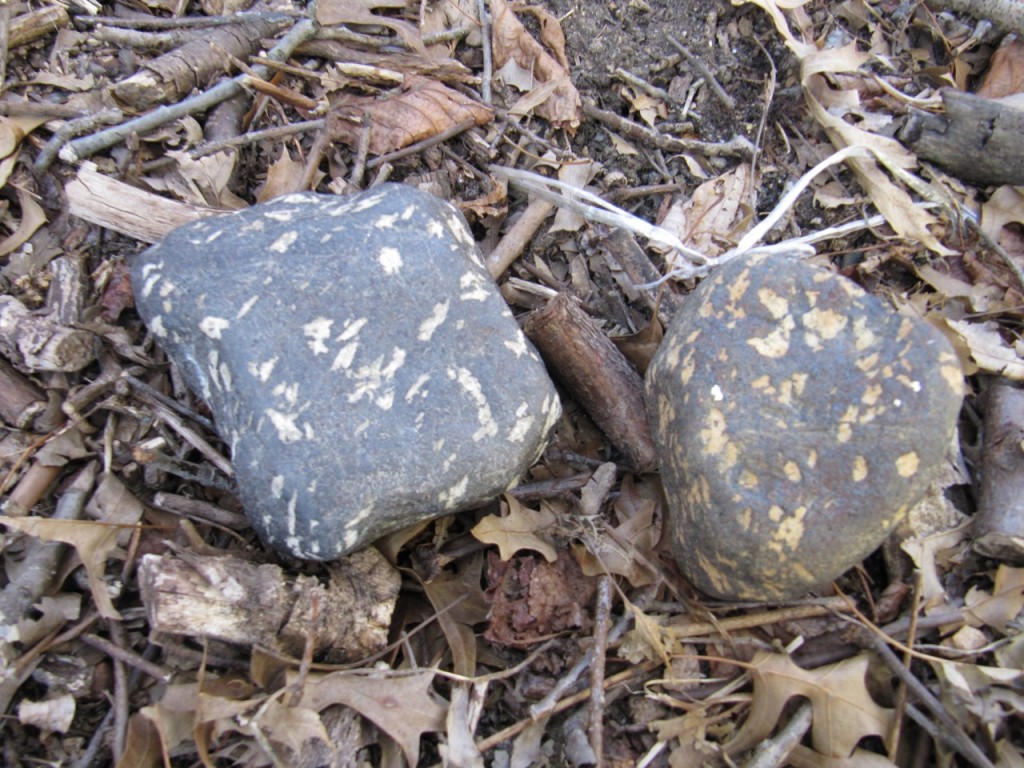

 Kirsten A. Bagaglia, CRPC
Kirsten A. Bagaglia, CRPC